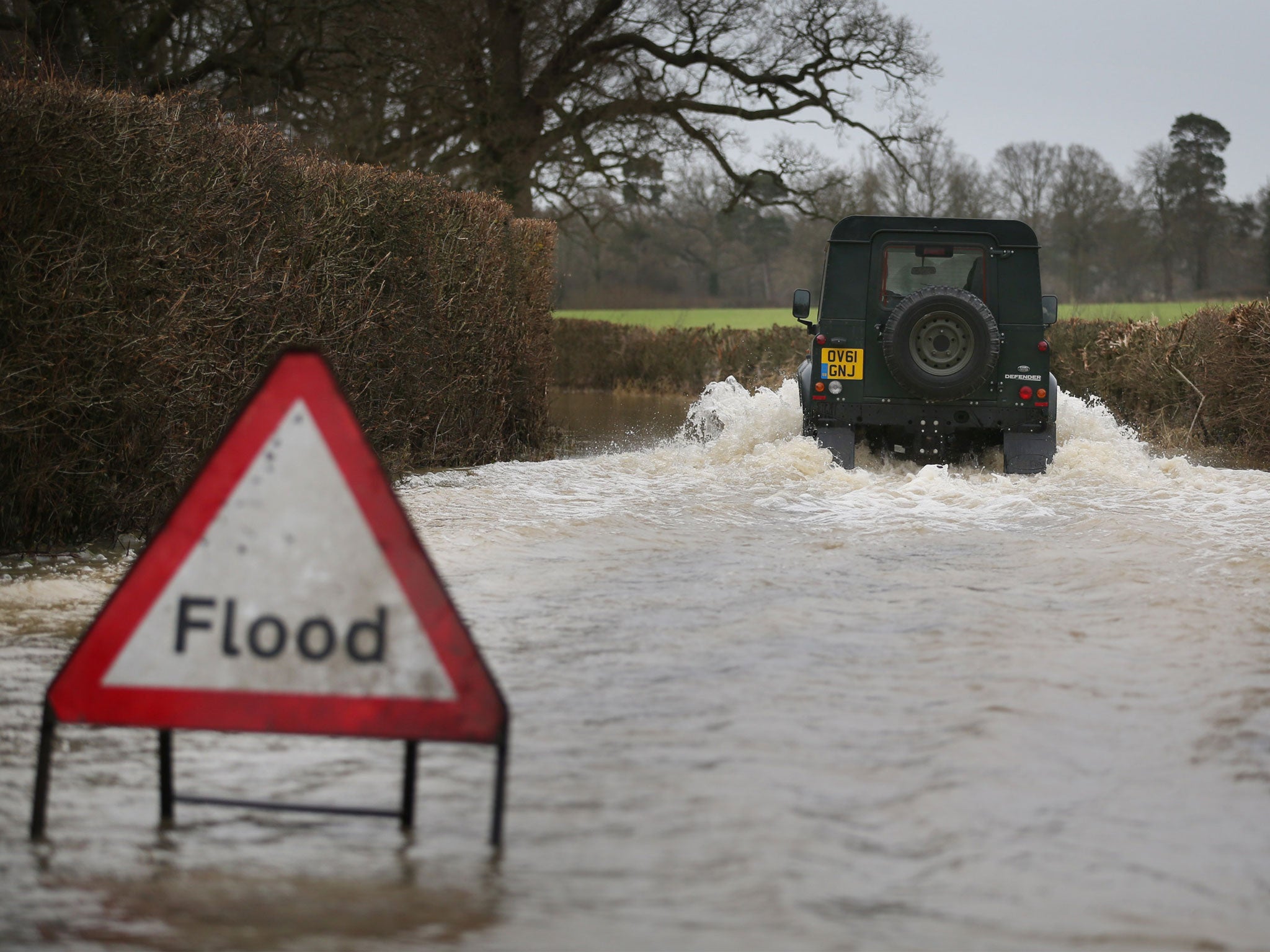UK floods: Top tips for driving in wet conditions and standing water as Britain faces ‘exceptional’ bad weather
The Environment Agency has issued a set of severe flood warnings, the highest category

With the UK facing “exceptional” bad weather in the coming days, ministers are warning residents, councils and power companies to expect the worst in terms of strong wind, heavy rain and flooding.
Severe disruption is also expected on the roads and rail networks, and drivers have been advised to avoid going out in the storm unless it is absolutely necessary.
For those who do, AXA have issued a series of top tips for road users to avoid disaster in the difficult conditions.
Maxine Tighe, Head of Motor Claims at AXA UK, said: “The forthcoming rainfall comes after a period when there have already been heavy storms. The ground is saturated and water levels in rivers are high, accentuating the risk of flooding.
“For many the festive period has already been disturbed by storms and flooding, and as we look to return to work it is going to continue. Our advice is always to avoid driving in severe weather conditions, but if it is absolutely necessary, make sure you are well prepared before setting off.
“Make sure you have extra layers for warmth, that you have a hazard light, as well as a full tank of petrol. Crucially, make sure your mobile phone has plenty of battery before setting out and save the contact details for your breakdown service in it also.”
Top tips for driving in flood conditions
1. Make sure your windscreen wipers aren’t worn or damaged – and working properly.
2. Make sure your lights, including your fog lights are working properly.
3. Double the distance between you and the car in front – your stopping distance in wet weather is longer.
4. Don’t drive fast through standing water – you could lose steering control.
5. If you break down in the rain, don’t leave your bonnet open while waiting for the breakdown service – a damp engine is harder to start again.
6. If you can’t see the road, you don’t know how deep the water is. Drive slowly through deeper water and use a lower gear to keep your revs high.
7. Don’t drive over bridges or fords where there is a danger that your vehicle could be washed away or hit by other objects in the flowing water.
Join our commenting forum
Join thought-provoking conversations, follow other Independent readers and see their replies
Comments